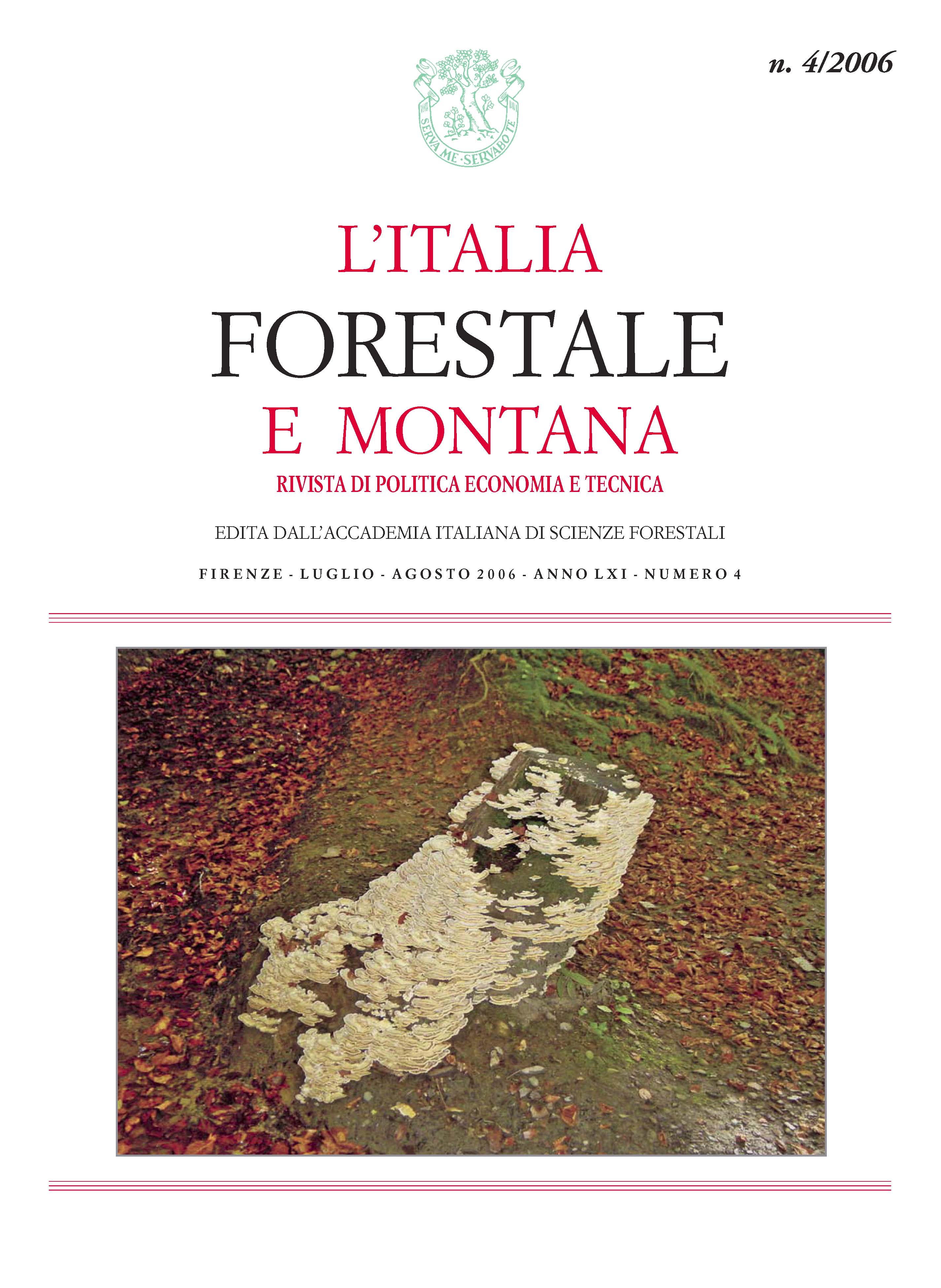Articles
Quali-quantitative analysis of deadwood in unmanaged stand: "Bosco Pennataro", Alto Molise
Published 2006-08-08
Keywords
- biodiversity conservation,
- deadwood,
- old-growth forests,
- indicators,
- natural evolution
Copyright (c) 2006 Italian Journal of Forest and Mountain Environments

This work is licensed under a Creative Commons Attribution-NonCommercial 4.0 International License.
Abstract
The protection of forests is not possible without the application of «systemic sylviculture» and biodiversity conservation. Also MCPFE recognized that deadwood has become more and more adopted as an indicator in the assessment of the biodiversity and naturalness of forest ecosystems. Its occurrence, in an appropriate proportion according to forest use, is fundamental to the maintenance of biological diversity and also to monitoring it. To define a forest as an old-growth forest, the question is how deadwood is important to identify different levels of old-growth forests, considering the scarce literature on this matter and the absence of a univocal definition of oldgrowth forest.This study is connected to the «Bosco Pennataro» management plan realization. «Bosco Pennataro» is located in a mountain area in Molise Region. This area is interesting for the relation between «Quercetalia pubescentis» and
«Fagetalia sylvaticae». Deadwood was estimated in rappresentative plots in two forests tipology: «Cerreta mesofila» and «Faggeta bassomontana su calcari», connecting results to the evaluation of the presence of old-growth areas. Results show that deadwood can be useful indicator to define the level of old-growth forests, and also an instrument to understand the evolution phase of a forest. «Bosco Pennataro» is not a tipical old-growth forest, specially if compared to other forests in Europe. However, «Bosco Pennataro» presents local interesting value situations in relation to the natural evolutionary dynamics, and is important that this area is left to evolve to old growth level in reasonable times.

